How to Install Pool Alarm
To install a pool alarm, first get your motion alarm for your pool by clicking here, next assess your pool’s size, layout, and usual activities to choose the right alarm. You’ll need tools like a drill, screwdriver, and safety gear. Clean and prepare the installation area, making sure the surface is level.
-
 Choose the right type of alarm based on your pool’s size and layout for effective monitoring.
Choose the right type of alarm based on your pool’s size and layout for effective monitoring.- Install the main pool sensor securely using screws, ensuring it’s aligned properly.
- Place the receiver strategically within 300 feet of the main unit to alert you of any disturbances effectively.
- Connect the base system to a power supply using a Ground Fault Circuit Interrupter for safety.
- Install batteries in the main unit for operation.
- Install a backup battery into the base unit.
- Test the system thoroughly to ensure it detects intrusions accurately and minimizes false alarms.
Key Takeaways
- Mount the base unit securely using waterproof techniques and confirm alignment.
- Place the sensor in the pool, positioning it strategically for best detection and minimal false alarms.
- Connect the receiver to the power supply, following safety standards, and thoroughly test the alarm to guarantee responsiveness.
- Regular maintenance and adjustments will keep it functioning effectively, paving the way for enhanced safety and compliance.
Assessing Your Pool’s Needs
 Before installing your pool alarm, evaluate your pool’s size, layout, and typical usage. Understanding how often and by whom your pool is used can greatly influence the alarm’s placement. For instance, if you’ve got kids who love to splash around every afternoon, you’ll want to set up an alarm system that can differentiate between wave activity caused by wind and actual entry into the water.
Before installing your pool alarm, evaluate your pool’s size, layout, and typical usage. Understanding how often and by whom your pool is used can greatly influence the alarm’s placement. For instance, if you’ve got kids who love to splash around every afternoon, you’ll want to set up an alarm system that can differentiate between wave activity caused by wind and actual entry into the water.
Additionally, it’s important to familiarize yourself with local regulations regarding pool safety. Some areas have specific requirements about the types of alarms you must install, such as those that detect surface or subsurface disturbances. These regulations aren’t just legal formalities; they’re designed to make sure that the safety measures in place are adequate for protecting all pool users, particularly in households with children or pets.
You should also consider your pool’s layout. Pools with multiple entry points or obscured sections may need additional alarm coverage to ensure no area is left unmonitored. By thoroughly evaluating these factors – pool usage patterns and local regulations – you’ll be better equipped to choose an alarm system that provides both compliance and peace of mind.
Alarm Placement Tips
After purchasing one of our motion alarms for your pool, consider the ideal placement to guarantee maximum effectiveness and safety. Visibility considerations are important as well. If you have pool bigger than 16×32 sq feet, or pool with two return lines, or a pool with irregular shapes, you will require multiple alarms.
Necessary Tools and Materials
Before you start installing your pool alarm, you’ll need to gather some specific tools and materials. You’ll require various tool types, including screwdrivers and possibly a drill, alongside essential materials such as screws and mounting brackets.
Don’t forget to wear the appropriate safety gear, like gloves and goggles, to make sure you’re protected throughout the installation process.
Required Tool Types
To successfully install a pool alarm, you’ll need specific tools and materials, including a drill, screws, and waterproof silicone. It’s important to choose tools that are up to the job and easy to handle. Here’s what you need:
-
- Cordless Drill: (Cross-bit dia.6mm) Make sure it’s fully charged for reliability.
- Screwdriver Set: Opt for ones with ergonomic handles to reduce hand fatigue. (Cross Dia. 6mm)
- Measuring Tape: Precision is key for proper placement.
- Percussive drill: (Dia.8mm) for drilling into cement when permanently mounting the sensor in an inground pool.
Essential Installation Materials
 What materials will you need to guarantee your pool alarm is installed securely and functions properly? Figure 1 shows everything that is included with your DIY Motion Alarm for your pool.
What materials will you need to guarantee your pool alarm is installed securely and functions properly? Figure 1 shows everything that is included with your DIY Motion Alarm for your pool.
First and foremost, make sure you’ve got high-quality mounting hardware, such as screws (included), that boast material durability to withstand constant exposure to water and varying weather conditions.
Don’t forget a set of batteries (not included) or a power source that’s equally resilient to water exposure, ensuring that your pool alarm remains operational and effective at all times, providing that essential layer of safety.
Safety Gear Overview
 Having covered the installation materials, let’s look at the safety gear you’ll need to guarantee a safe and efficient setup of your pool alarm.
Having covered the installation materials, let’s look at the safety gear you’ll need to guarantee a safe and efficient setup of your pool alarm.
Personal protection is paramount. You’ll be working near water, and even skilled swimmers need safeguards in place. Here’s the safety gear you should have:
-
- Safety goggles to protect your eyes from debris or chemical splashes.
- Gloves to safeguard your hands from sharp objects and provide a better grip.
- Non-slip shoes to prevent accidents on wet surfaces.
- Life jacket or flotation device for unexpected falls into the water.
Always conduct rescue drills and familiarize yourself with emergency procedures to enhance safety during the installation process.
Preparing the Installation Area
Make sure the poolside area is clean and level before installing the pool alarm. Begin by clearing any debris, leaves, or tools that might interfere with your work area. It’s crucial to focus on area cleanliness to guarantee that nothing hinders the installation process or affects the alarm’s functionality.
Next, check the surface leveling. Use a spirit level to verify that the ground is even. An uneven surface can lead to improper installation, which might compromise the alarm’s efficiency and safety. If you find any dips or bumps, consider leveling the area with sand or small stones before you proceed.
After ensuring the area’s cleanliness and level, take a moment to plan the layout of your pool alarm system. Identify where the main unit will be and make sure that there are no obstructions in its line of sight to the pool. This setup is crucial to ensuring that the alarm functions optimally, detecting any disturbances in the pool water.
Installing the Base Unit
Once you’ve prepared the installation area, you can now mount the base unit of your pool alarm. Choosing the right location is essential for peak performance, so make sure it’s within 300 feet of the pool sensor. You’ll want to make certain the unit is accessible for maintenance and monitoring.
 Here are a few steps to help you mount the base unit securely:
Here are a few steps to help you mount the base unit securely:
-
- Connect the DC plug with the receiver and power on the receiver
- Set the red switch key to ON, the LED3 of the receiver will flash every 10 seconds to indicate the receiver is in working status.
- Please read the manual carefully before use and learn the function and intelligence of the receiver.
You’re now ready to move on to the next step, setting up the sensors. Make sure the base unit is tested for functionality before proceeding.
Connecting to Power Supply
After setting up the sensors, connect the pool alarm to a reliable power source to guarantee continuous operation. When you’re dealing with electrical components near water, you need to handle power considerations and guarantee electrical safety to avoid any potential hazards.
Here are some key steps to safely connect your pool alarm to the power supply:
-
- Check the Voltage Requirements: Make sure that the power source matches the voltage requirements of the pool alarm. Incorrect voltage can lead to malfunction or damage.
- Use a Ground Fault Circuit Interrupter (GFCI): For added safety, plug the power supply into a GFCI outlet. This will help protect against electrical shock by breaking the circuit when there’s a disparity in the currents.
- Secure All Wiring: Ensure that all wiring is properly insulated and secured away from water. Use waterproof covers and conduits where necessary.
- Follow Manufacturer’s Instructions: Always adhere to the manufacturer’s guidelines for power connections to guarantee safety and functionality.
Setting Up Sensors
Now, let’s focus on setting up the sensor(s) for your pool alarm. First, you’ll need to identify the best locations around your pool where the sensors will be most effective.
Once you’ve picked the spot, it’s time to mount the sensor. Make sure they’re secure and positioned so that any disturbance in the water will trigger them. This is where sensor tube calibration comes into play.

You’ll want to adjust each sensor tube to the specific conditions of your pool. Calibration involves setting the sensor tube should be submerged into water 10 cm (3.9″) deep, not deep enough and you’ll get false alarms on windy days; too deep, and you might miss genuine intrusions.
Also, consider the environmental factors that could affect sensor performance. Things like heavy rain, strong winds, or even a branch falling into the water can cause false alarms if your tube sensor aren’t calibrated correctly. Adjust the settings according to the usual environmental conditions in your area to maintain efficiency and minimize false alerts.
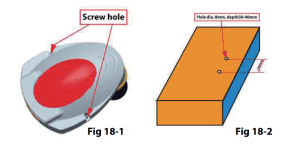
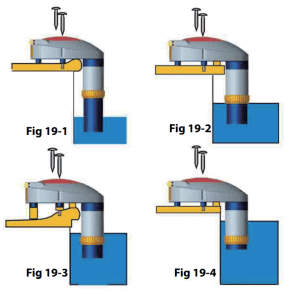
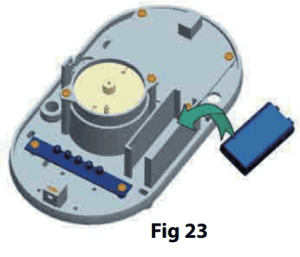
- Select the Mounting Options: Depending on your pool type and surrounding area, you will have different mounting options. Permanent installations require drilling into wood, cement, or tile.
- Use Waterproofing Techniques: To safeguard the base unit from moisture and weather elements, apply waterproof sealants around the housing. Ensure all covers and access points are tightly sealed.
- Secure Firmly: Use screws provided with your alarm. If drilling is required, double-check for any underlying wiring or pipes.
- Check Alignment: Once mounted, ensure the unit is level and stable. Any misalignment might impact the alarm’s sensitivity and performance.
- Install Batteries: 6pcs alkaline batteries LR20 1.5V, D-Size
Testing the Alarm System
Before using your pool alarm, it’s important to test the system to make sure it functions correctly. Start by checking the alarm responsiveness. Activate the alarm manually from the user interface, which is typically either a button on the unit or a feature within a mobile app. Listen for the alarm to sound immediately, indicating that the sensors are properly detecting disturbances.
Next, simulate a real-world scenario, like an object falling into the pool. You can use a ball or

another small object to mimic the disturbance caused by unintended entry into the water. The alarm should activate without delay. This step is essential to ensure that the alarm will alert you effectively in case of an actual emergency.
Also, interact with the user interface to familiarize yourself with its features. Adjust settings such as sensitivity levels and alarm tones to suit your needs. Make sure that you can easily navigate through the system’s options without confusion.
After these tests, monitor the system for a short period to confirm consistent performance. If the alarm maintains its responsiveness and the user interface remains intuitive and functional, you’ll have greater peace of mind knowing your pool is safely monitored.
Troubleshooting Common Issues
Despite thorough testing, you might still encounter issues with your pool alarm; let’s address some common problems and their solutions.
-
- False Alarms: Sometimes, you’ll find the alarm going off without any apparent reason. This can often be due to wind or debris falling into the pool. Adjust the sensitivity settings of your alarm to resolve this issue.
-
- Signal Interference: If your pool alarm frequently fails to transmit alerts, it could be experiencing signal interference. Make sure that there are no large metal objects or electronic devices between the alarm sensor and the receiver that could block the signal.
-
- Battery Lifespan: A common issue is the alarm not functioning due to dead batteries. Check the battery power regularly and replace them as needed to guarantee continuous operation.
-
- Sensor Malfunction: If your alarm doesn’t activate when it should, the sensor might be malfunctioning. Make sure the sensor is clean and not obstructed by dirt or leaves. If it’s clean and still not working, consider replacing the sensor.
Maintenance Tips
To guarantee your pool alarm remains effective, you must maintain a regular cleaning schedule. Don’t forget to perform seasonal inspection checks to catch any potential issues before they become major problems.
Regular Cleaning Schedule
Setting up a regular cleaning schedule for your pool alarm guarantees it remains effective and prolongs its lifespan. Use appropriate cleaning products and make necessary filtration adjustments to make sure the alarm functions without interference from debris or chemical imbalances.
Here’s a simple checklist to keep your pool alarm in top shape:
-
- Inspect and clean the sensor tube: Wipe it down gently to prevent build-up.
- Check battery terminals: Clean off any corrosion and ensure connections are secure.
- Verify control panel settings: Adjust as needed for best performance.
- Test the alarm monthly: Confirm it’s responsive and loud enough.
Sticking to this routine helps avoid unexpected malfunctions and keeps your swimming area safe.
Seasonal Inspection Checks
Regularly conducting seasonal inspection checks on your pool alarm guarantees it operates reliably and efficiently throughout the year. You should schedule these inspections at the start of each season, as changes in weather can have a big impact on the functionality of your alarm.
During the spring, check for any damage caused by winter freezes. In summer, make sure the alarm’s sensor tubes aren’t affected by excessive heat or humidity.
The arrival of fall is important for checking battery life and water resistance after a hot summer, and winter preparations involve securing the alarm against potential storm damage.
Frequently Asked Questions
Can Pool Alarms Be Used in Saltwater Pools?
Yes, you can use pool alarms in saltwater pools, but you’ll face installation challenges due to saltwater corrosion. Make sure to check the parts of the alarm that are in the water as these harsher conditions may cause the sensor tubes to degrade faster.
Is your Pool Alarm Pet-Sensitive?
Yes, as long as your pet weighs more than 12 to 15 pounds, providing necessary protection around the pool.
How Long Do Pool Alarm Batteries Typically Last?
Pool alarm batteries typically last about a year, but it depends on usage. You’ll need to check battery maintenance tips and watch for replacement indicators to guarantee your alarm’s always ready.
I do not want to drill holes, can I still install it?
Yes, you can place the alarm edge of the poolside and secure it using a weather proof adhesive and/or caulk.
Do Pool Alarms Work in All Weather Conditions?
Yes, pool alarms generally work in all weather conditions, but their seasonal effectiveness can vary. You’ll face more installation challenges during extreme weather, so it’s best to set it up in mild conditions.


